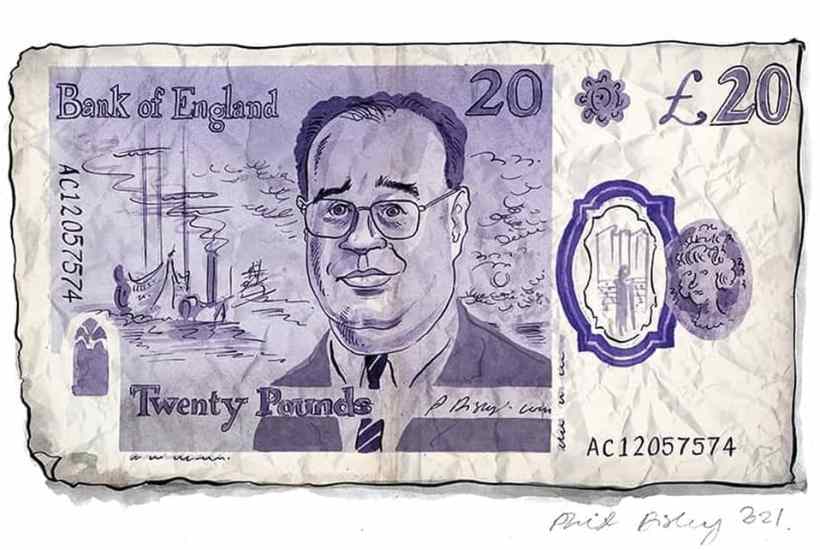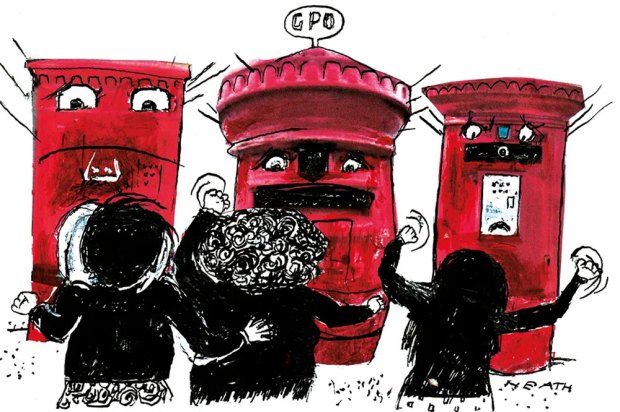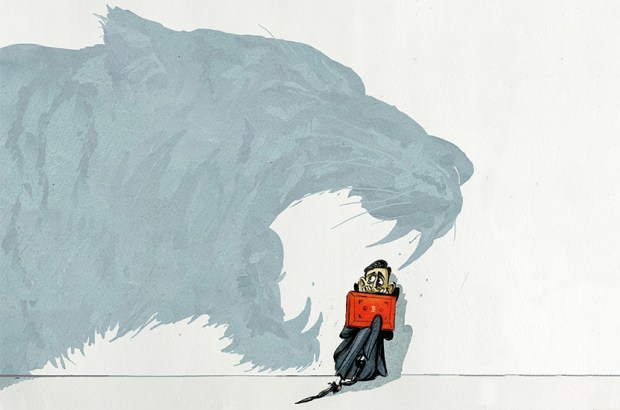Would Andy Haldane, the economist who left the Bank of England to run the Royal Society of Arts, have made a better governor than Andrew Bailey? You might be thinking that Daffy Duck would have made a better fist than Bailey of combatting the cost of living crisis. But seriously, Haldane was an outsider (backed by this column) in the race won by Mark Carney in 2012, and Dominic Cummings reportedly wanted him to follow Carney in 2020. He’s a brilliant real-world observer and it’s poignant to know that, though he warned Monetary Policy Committee colleagues early last year to brace for inflation, it has ‘surpassed my worst expectations’. He thinks the Bank has been damagingly slow in its responses and that we’re heading for ‘a massive shock’ precipitated by the need for sharply higher interest rates.
But ‘I’m really the wrong person to ask about why they got it wrong’, he told the Sunday Telegraph, and there’s a sense in which Haldane is a natural backbencher – never put to the test, as Bailey has been, of frontline leadership. And of course the Ukraine war has shifted the whole spectrum of economic expectations relative to where they were just a few months ago. Still, his remarks provoke big questions.
Were the Bank’s repeated understatements of the accelerating pace of inflation deliberate signals to discourage firms from raising prices and workers from demanding higher wages, even if the signals failed to work? Or a disastrous misreading of the available data? As a judgment on Bailey and his team, which is worse? And who now puts credence on their latest forecast: that the UK economy will ‘narrowly avoid’ a two-quarter recession and inflation will peak precisely at 10.25 per cent?
You can almost hear Bailey’s media crew: ‘Ten’s too round, governor, and we think any whole number above ten’s too frightening. But if we stick a scientific point-two-five on the end, the public will think you’ve, like, totally got a grip.’ Come back, Haldane – maybe with Daffy Duck as your PR guy.
McColl’s destiny
McColl’s, the struggling chain of 1,100 convenience stores, was always destined to be rescued by Morrisons; 250 of those stores operate under the Morrisons Daily brand and the supermarket giant is also the biggest supplier to McColl’s. The surprise was that EG Group – the Issa brothers’ petrol-stations-to-Asda conglomerate – belatedly popped up as an alternative buyer of McColl’s, which had suddenly been forced into administration. Why so?
Apparently because the lending bankers behind McColl’s thought they might get better terms from EG even if that meant worse terms for McColl’s staff and pensioners. But common sense prevailed, Morrisons upped its offer – and the bankers’ favourite EG will no doubt borrow more billions to fund other expansions. We’ll see how that plays out in the Haldane ‘massive shock’ scenario.
Beware bigger landlords
Residents of Soho and Covent Garden are perturbed by the prospect of a £3.5 billion merger of two of the West End’s biggest commercial landlords: Shaftesbury – which owns 600 buildings in Chinatown, Seven Dials (where I now live) and around Carnaby Street – and Capital & Counties, known as Capco, which owns the Covent Garden piazza.
Long gone are the days when these historic enclaves were at risk of brutal demolition for redevelopment – well captured by a Spectator cover cartoon from 1972 of a cigar-chomping, top-hatted fat cat driving a bulldozer. There are still some new-build horrors in prospect, but observing the throng of strollers in the largely traffic-free, Jubilee-buntinged byways of Seven Dials on Sunday afternoon, I’d have to give some weight to Shaftesbury’s claim to be ‘curating lively and thriving villages’ – while Amanda Rigby of the Covent Garden Community Association tells me ‘Capco has managed the piazza better than previous owners’.
But the more monopolistic the landlord, the higher the rents are likely to go. That will squeeze out quirkier independent shops and bistros in favour of low-waged fast-food chains and multiple retailers, while ‘pop-up shops’ may look funky but merely provide cover for high vacancy rates that follow rent inflation. And big property firms tend to be run by small executive teams that delegate operational matters to agents, so rarely respond directly to public complaints about revellers leaving nightclubs at 4 a.m.
If this merger goes ahead, residents will look for stronger reassurance than the companies’ current verbiage – but we’ll also take comfort that the biggest shareholder in the combined business will be the sovereign wealth fund of Norway. Maybe I’m stereotyping, but I’ve always thought of Norwegians as sober, ungreedy and early-to-bed; their influence will be welcome.
Electric performance
I’m intrigued by Rivian, the electric pick-up truck maker that was hailed as the new Tesla when it listed on the US Nasdaq exchange last year and briefly hit a market value of $180 billion, making it worth more than Ford and General Motors combined even though its output was still tiny. Since then it has been forced to admit that its sought-after vehicles were wildly underpriced and that its assembly line is plagued by supply-chain hiccups. Its shares have fallen from $179 to $23 – and that in turn has caused huge losses for two of its major investors, Ford and Amazon: the latter, for which Rivian is building a fleet of electric delivery vans, declared its first quarterly loss since 2016 after a $7.6 billion drop in the value of its Rivian stake.
Another flash-in-the-pan of tech stock madness? That’s certainly how it looks. But the company’s driven founder, R.J. Scaringe, is evidently pursuing a long-term vision of electric travel rather than a shortcut to billionairehood: according to one investor, he’s ‘like a normal, sane Elon Musk’. Rivian, despite recent ructions, is a name to watch.
Got something to add? Join the discussion and comment below.
Get 10 issues for just $10
Subscribe to The Spectator Australia today for the next 10 magazine issues, plus full online access, for just $10.
You might disagree with half of it, but you’ll enjoy reading all of it. Try your first month for free, then just $2 a week for the remainder of your first year.














Comments
Don't miss out
Join the conversation with other Spectator Australia readers. Subscribe to leave a comment.
SUBSCRIBEAlready a subscriber? Log in